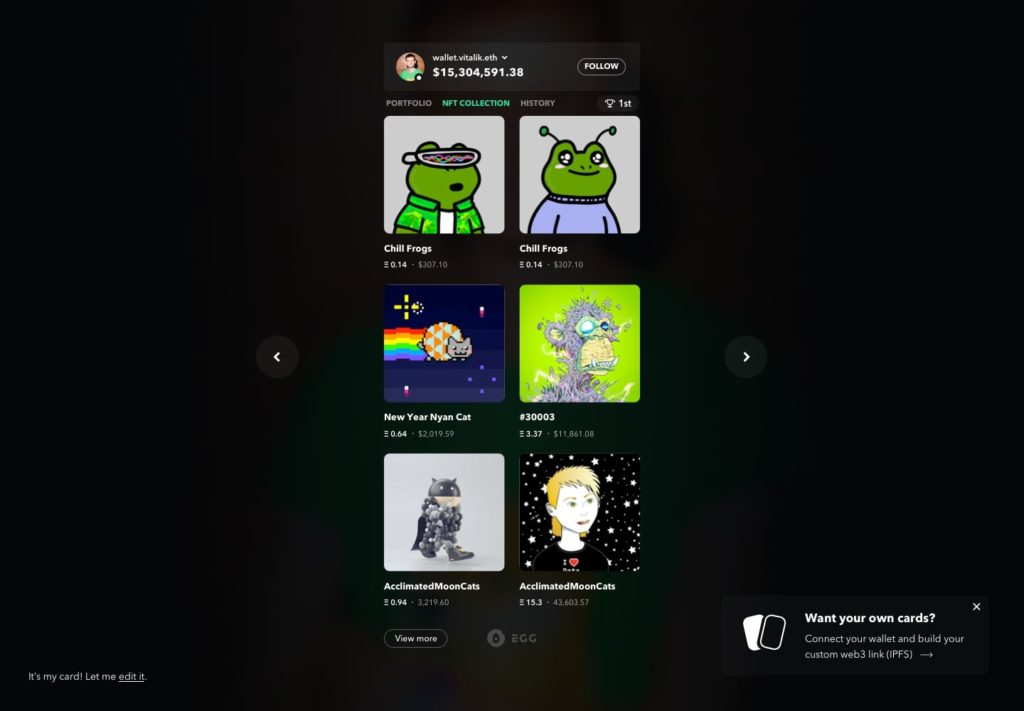Table of Contents
NFTs and crypto art trends are getting famous day by day. In this article, I’ll show you some of the most common ways to introduce digital art in both physical and digital spaces.
Non-Fungible Tokens (NFT) are the new gold fever right now, as NFT collectors are constantly trying to find the next Mona Lisa on the blockchain.
With millions of dollars being exchanged for digital art each week, it’s hard to wonder why there are so few opportunities to actually showcase NFTs in both physical and digital space. It feels like an egg that no one actually cracks in the field of cryptocurrencies.
In this article, we’ll consider some of the existing options for displaying NFTs like traditional art.
Displaying NFTs Online
Since Crypto Art is an internet-born format, it makes sense to find a way to view far more NFTs online than IRLs at this time.
Keeping a collection of digital art online is often significantly cheaper than viewing it at home, and more people around the world may see it here as well. Let’s take a look at some of the existing options.
NFT Galleries
1. EGG Cardboard

With EGG Cardboard, NFTs have presented a good way. You can get a short link (to share in your bio for example) that showcases all the NFTs that are in your wallet(s). It supports multiple blockchains.
For example, If we take the vitalik.eth wallet (the ENS name linked to vitalik’s 0x address), we are able to see all of his NFT collection in a cool environment.
EGG Cardboard doesn’t only present NFTs, there are many other cards that you can add and present under the same link.
2. Showtime

Showtime tries to position itself as an NFT social network. Once you connected your crypto wallet to their website, Showtime quickly generates an aesthetic profile that shows all of the NFTs in your collection. The user experience is similar to Instagram’s one.
You are able to follow other users, comment on their profiles and like their NFT assets, you can also even make an offer to buy NFTs from various collections. Websites that try to simplify the user experience while interacting with the blockchain can offer the best onramp for people new to this space. A familiar showtime nail that looks good on NFTs.
3. Lazy

A new entry into the Crypto Art Space, Lazy is an online NFT art gallery launched by Shark Tank investor Mark Cuban. Now in beta, the site is not ashamed of its name by providing collectors with a simple, non-stimulating way to introduce NFTs online.
At this point, Lazy feels like a work in progress. This site lacks all of Showtime’s major social features and provides collectors with only a basic page for displaying NFTs. For this reason, it’s difficult to recommend Lazy at this time, but I hope this site is faithful to its name and will add more interesting ways to interact with NFTs in the near future.
4. OpenSea

OpenSea is the largest NFT marketplace online today and one of the best places to view your cryptocurrency collection. This site provides a seamless experience for both shopping for art and browsing works collected by fellow NFT enthusiasts.
We love to browse the latest highest bids for very expensive NFT auctions and click on these user profiles to browse the impressive collections. It’s like the NFT version of Zillow’s Third for Mansions. Getting started with OpenSea is as easy as connecting a crypto wallet and instantly displaying your collection on the screen.
Metaverse
Unless you’ve mentioned “Metaverse” at least once, this isn’t an article about how to showcase your futuristic internet art. No company has yet developed the completely immersive virtual world envisioned in science fiction books such as SnowCrash and ReadyPlayerOne, but some are trying to get users to bring NFTs.
These are some of the video games and virtual worlds where your crypto art can shine. Some of the worth mentioning projects are:
- Decentraland
- Sandbox
- Cryptovoxels
Displaying NFTs in Real Life
Placing an NFT in your home or gallery takes more effort than doing physical work, but it often gives great results. NFT pioneers around the world have devised some very unique ways to share collections using analog and digital tools. Let’s find out how they do it.
Digital Frame
Digital photography and video frames have come a long way in the last decade, and many crypto art collectors have embraced these devices as a way to bring NFTs to life on their walls. These frames are available in all shapes and sizes and prices vary entirely.
Physical Prints with QR Codes
NFTs and cryptographic art displayed in physical space should not be restricted to exist only on the screen. That’s why I love this physical printing concept of NFTs, which was first shared by collector Andrew Coathup.
The DIY approach prints NFT still images (which don’t work with loop videos and other formats) and creates custom art labels as well as the museum’s prominent works. Andrew’s tags include information such as the title of his work, artist, purchase, and a handy QR code that links to information pages about NFTs in the OpenSea Marketplace.
This is a cheap and elegant solution for collectors who don’t want to increase screen time in their daily lives (Andrew created him for less than $ 20). There is no doubt that more galleries are adopting this format for NFT events in real life.

Disclaimer: The opinion expressed here is not investment advice – it is provided for informational purposes only. It does not necessarily reflect the opinion of EGG Finance. Every investment and all trading involves risk, so you should always perform your own research prior to making decisions. We do not recommend investing money you cannot afford to lose.
 English
English Français
Français Español
Español Bahasa Indonesia
Bahasa Indonesia 中文 (中国)
中文 (中国) Русский
Русский Português
Português Deutsch
Deutsch

